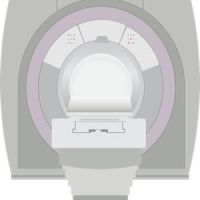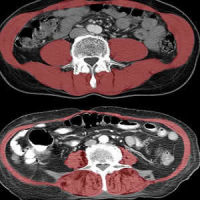According to results from a series of studies led by researchers at Johns Hopkins Medicine, the addition of a noninvasive imaging test called 99mTc-sestamibi SPECT/CT to CT or MRI increases the accuracy of kidney tumour classification. The researchers believe that using this test could improve diagnostic accuracy and could spare thousands of patients from unnecessary surgery.
See Also: Simultaneous PET/MR Imaging - Key Benefits
The report, published in the journal Clinical Nuclear Medicine, is based on ongoing work to improve kidney tumour classification. Research findings suggest that the sestamibi SPECT/CT test provides additional diagnostic information in conjunction with CTs and MRI. This extra information could help improve the physicians' ability to differentiate between benign and malignant kidney tumours.
According to Mohamad E. Allaf, MD, MEA Endowed Professor of Urology at the Johns Hopkins University School of Medicine, this noninvasive scan could prevent patients with a potentially benign tumour from undergoing an unnecessary surgery. He further adds, "At Johns Hopkins, use of this test has already spared a number of our patients from unnecessary surgery and unnecessary removal of a kidney that would require them to be on dialysis. These results are hugely encouraging, but we need to do more studies."
During the study, 48 patients diagnosed with a kidney tumour based on conventional CT or MRI results were imaged with sestamibi SPECT/CT at Johns Hopkins prior to surgery. Radiologists graded the conventional and sestamibi SPECT/CT images benign or malignant using a 5 point scale where 1 was definitely benign and 5 was definitely cancerous. These radiologists were not allowed to talk to each other or know the results of the surgeries. Once the surgery was performed, a similar blinded approach was used and this time the pathologists analysed the tumours without knowing the results from the radiologists.
Results from the pathologists showed that 8 out of the 48 surgically removed tumours were benign while the remaining 40 were different tumour types including malignant renal cell carcinomas.
This analysis shows that using sestamibi SPECT/CT scan results in conjuction with CT or MRI changed the initial rating levels from cancerous toward benign in 9 cases and from likely cancerous to definitely cancerous in 5 cases. Diagnostic certainty was achieved in 14 of the 48 patients with the addition of sestamibi SPECT/CT. 7 of 9 benign tumours were identified with the addition of sestamibi SPECT/CT and the use of these tests in conjunction clearly outperformed conventional imaging alone.
In patients whose tumours were not reclassified, sestamibi SPECT/CT increased the ability of the physicians to classify malignant tumours more confidently. This reduced the risk of misdiagnosis and unnecessary surgery.
"As radiologists, we have struggled to find noninvasive ways to better classify patients and spare unnecessary surgery, but this has not been easy," says Steven P. Rowe, MD, PhD, one of the two former residents who developed this approach, and now assistant professor of radiology and radiological science at the Johns Hopkins University School of Medicine. "Sestamibi SPECT/CT offers an inexpensive and widely available means of better characterising kidney tumours, and the identical test is now being performed as part of a large trial in Sweden, for which the first results have just recently been published and appear to confirm our conclusions."
Source: Johns Hopkins Medicine
Image Credit: Dialysis Technician Salary
References:
Sheikhbahaei S, Jones CS, Porter KK, Rowe SP, Gorin MA, Baras AS, Pierorazio PM, Ball MW, Higuchi T, Johnson PT, Solnes LB, Epstein JI, Allaf ME, Javadi MS. (2017) Defining the Added Value of 99mTc-MIBI SPECT/CT to Conventional Cross-Sectional Imaging in the Characterization of Enhancing Solid Renal Masses. Clin Nucl Med. Apr;42(4):e188-e193. doi: 10.1097/RLU.0000000000001534.
Latest Articles
MRI, CT scans, sestamibi SPECT/CT, kidney tumour
According to results from a series of studies led by researchers at Johns Hopkins Medicine, a noninvasive imaging test called 99mTc-sestamibi SPECT/CT to CT or MRI increases the accuracy of kidney tumour classification



























